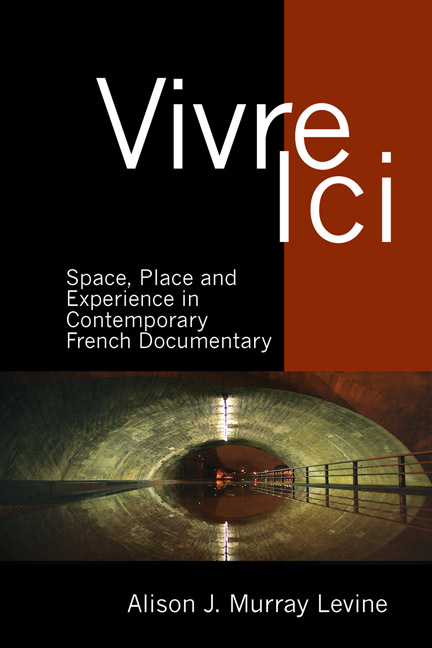Introduction
Summary
How do we analyze what happens between the filmed body or bodies, the filming body or bodies, the spectator's body, and the technological apparatus that links them to each other?
—Jean-Louis Comolli, lecture, Ateliers Varan, Paris, 2000The place of the filmmaker is to be inside. At the same time, to be outside, making images for outside. [… My art …] places the person I am filming at the heart of his own words.
—Denis Gheerbrant, lecture, Aix-Marseille Université, 2010I think space will be the major issue of the future.
—Raymond Depardon, La France de Raymond Depardon, 2010A documentary enthusiast curious about recent French cinema would come across a vast collection of films by established and emerging filmmakers, addressing a wide array of subjects in a seemingly infinite variety of narrative modes. This spectator might choose a high-profile title such as an environmental film by Jacques Perrin, exploring the expansive, interconnected worlds of the planet's skies and oceans. Or perhaps a quirky cinematic autobiography by the indefatigable Agnès Varda, wandering along the beaches of her past among images drawn from her personal visual archive. She might choose to follow Nicolas Philibert to a one-room schoolhouse in rural Auvergne, or Raymond Depardon inside the walls of farmhouses in the Ardèche, the Haute-Saône, and beyond. A less well-trodden path would lead through the empty streets of nocturnal Paris with Claus Drexel, where Christine sleeps nightly by the fence around the Jardin des Plantes. Bundled in layer upon layer of silver space blankets, Christine looks straight into the camera, straight at the viewer, as the snow piles up on her huddled form. This same viewer might choose to accompany Alice Diop within the walls of a tiny, cramped doctor's office in western Paris, where a young mother relives a traumatic memory, her back to the camera, as her baby looks over her shoulder, straight into the viewer's eyes.
This book proposes one possible itinerary through the vast viewing landscape of contemporary French documentary, an itinerary that leads past all the films mentioned above. These very different films were all produced during a period of exceptional effervescence in French documentary production.
- Type
- Chapter
- Information
- Vivre IciSpace, Place, and Experience in Contemporary French Documentary, pp. 1 - 20Publisher: Liverpool University PressPrint publication year: 2018



